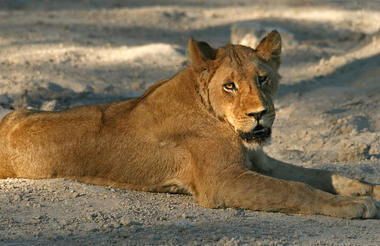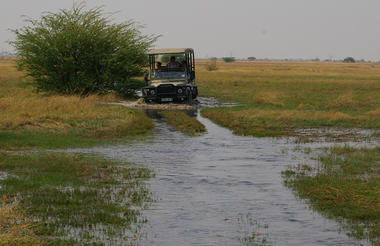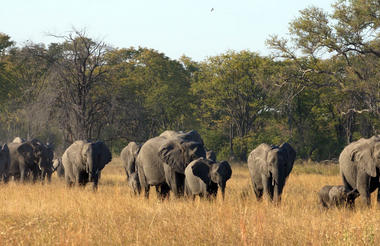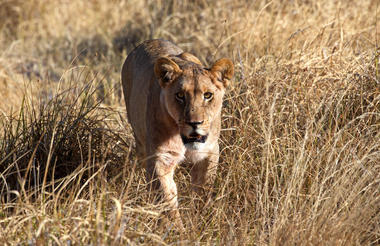After your arrival at Maun International Airport you will be met by Mack Air for your charter flight at approximately 14h00
to the Xakanaxa (Moremi) or Khwai airstrip (dependent on direction of travel) where you will be met by your guide.
If you are staying in Maun prior to the safari, please request an airport transfer, Mack Air will liaise with your accommodation the day before to confirm the flight departure time.
Alternatively, if you are coming from one of the many safari lodges, you can organize to fly directly into Xakanaxa Airstrip with the lodges preferred charter company although we do request that these flights land only after 12h00 in order for our guide to be there to meet you.
Spending our first three nights camping in the Xakanaxa region, we explore the surrounding wilderness on game drives during the day.



Game Drives
Scenic Flight
After breakfast you will head Habitat: Moremi lies on the eastern extremity of the Okavango Delta. Habitats here range from wide-open floodplains,
marshes, lagoons, papyrus fringed channels, vast stands of Miscanthus and Phragmites, woodland and savannah. As a result of the extremely variable habitat the diversity of both wildlife and birdlife is excellent.
Wildlife: Moremi is amongst the best game reserves in Africa for viewing the endangered African wild dog. Xakanaxa is home to a resident herd of several hundred buffalo whose range covers the territories of at least 4 prides of lion which may often be seen flanking the ever moving herd. Breeding herds of elephant move between their browsing areas in the mopane forests and the fresh water of the Okavango. Red lechwe are one of the more unusual antelope species and commonly found here.
Birding: The swampy areas of Xakanaxa are home to African Rail,
Coppery-tailed Coucal, Black Coucal*, Red-chested Flufftail, African Crake*, Black Crake, Chirping Cisticola, Luapula Cisticola, Purple Swamphen, Allen’s Gallinule to name but a few. The open waters attract African Skimmer, Saddle-billed Stork, Yellow-billed Stork, Intermediate Egret, Goliath Heron, African Fish Eagle as well as the globally threatened Slaty Egret and Wattled Crane.



Following and early morning breakfast you take a slow drive through Moremi Game Reserve north-east towards the Khwai Community Area.
Habitat: The Manuchira Channel is known as the Khwai River at its eastern most extremity. The day’s journey follows this water course, with the track weaving from the riverside and floodplains into the mopane veld and the woodlands that make Khwai one of the most scenic areas of the Okavango. We pass the magnificent Dombo Hippo Pools in the morning stopping to enjoy the scenery and the antics of the resident hippo.
Wildlife: The western mopane veld is home to mostly breeding herds of elephant whilst the eastern reaches of Khwai is home to some impressive old bulls. The mature bulls revel in the cool waters of the Khwai and are far more approachable while drinking and bathing than the breeding herds. The river has an unusually high density of hippo as well as some huge crocodile. Leopard, cheetah, serval and lion are common predators along this route and both Xakanaxa as well as Khwai are included in the home ranges of 2 different packs of wild dog. General game includes
southern giraffe, Burchell’s zebra, tessebe and red lechwe with roan and sable antelope being less common residents.
Birding: In the mopane woodlands African Hawk-Eagle, Tawny Eagle, Gabar Goshawk, Little Sparrowhawk, African Harrier Hawk and Shikra are common raptors. Mixed bird parties move through the canopy and include Red-headed Weaver, Stierling’s Wren-Warbler, Scarlet-chested Sunbird, Neddicky, Yellow-breasted Apalis, Chin-spot Batis, Diederik Cuckoo* to name but a few. The verges of the swamp form breeding grounds for the Rosy Longclaw, Black Coucal*, Long-legged Bustard and the African Crake*.



Night Game Drives
Habitat: We spend our time between the dry-land habitats of the lead-wood and camel-thorn woodlands and savannahs and the riverside and marshy back-waters of the Khwai. Time permiting we may visit the lagoons and waterways of Xakanaxa where the largest heronry in southern Africa exists.
Wildlife: The Khwai region boasts excellent populations of both bull elephant as well as breeding herds. Lion, leopard, serval and African wildcat are common predators of the region with wild dog and cheetah being less common. Buffalo use this area seasonally with large herds moving in during the summer rains. The swampy areas in the west are home to red lechwe. Other ungulates include tsesebe, blue wildebeest, giraffe, kudu, sable antelope, roan antelope and impala.
Birding: Truly one of Botswana birding Mecca’s. The western
reaches are prime habitat for the uncommon Rosy-throated
Longclaw. The entire length of the river is hunting domain for the BatHawk. Other interesting raptors here are Cuckoo Hawk (rare), Longcrested Eagle and Black Sparrowhawk. More commonly Tawny Eagle, Steppe Eagle*, Lesser-spotted Eagle*, Martial Eagle, Bateleur and African Hawk-Eagle. The waterways host Africa Rail, African Crake*, Greater Painted Snipe, Allen’s Gallinule*, Lesser Jacana and Lesser Moorhen*.






After breakfast we take a game-drive to the airstrip where you will be met by your charter flight back to Maun.
Should you be flying on to a safari lodge, you can fly directly out from Khwai Airstrip to avoid returning to Maun. Please request that the lodge’s preferred air charter company collects you from Khwai Airstrip prior to 12h00.
This marks the end of your Safari.
NOTE: Although we make every effort to adhere to schedules and itineraries, these are subject to change subject to weather, roads, and animal movements and availability. You will be notified of any changes.




